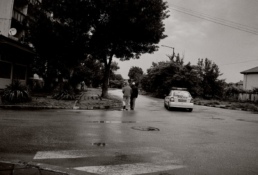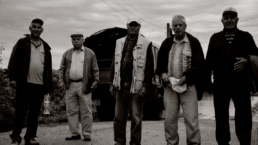In the shadows of Belene
This is a story of ying and yang, communism and socialism, sadism and peace. My purpose of documenting this story was to explore the story of my grandfather who was a prisoner in Belene Concentration Camp . He passed away as a inadequate old man whom history was very abridged from me. The things I found after digging in into the details exceeded my expectations about the evil of communism in Bulgaria and Russia.
History
The Bulgarian Belene Concentration Camp was established on the 27th April, 1949, on the basis of a secret decree of the Council of Ministers, led by the Prime Minister, Vasil Kolarov. The Communist government took the decision to create a Labour Education Hostel (LEH) and the Ministry of the Interior was given the responsibility for establishing the camp on the Danube islands of Persin, Golyama Barzina, Malka Barzina, Milko, Magaretsa, Sovata and Predela. This was to lead to the creation of the biggest camp for the opponents of the BCP (Bulgarian Communists Party) in regime during the communist period. It became known as the Belene camp and was built on Persin island, the biggest of the Danube islands.
The opponents of the communist dictatorship were forced to live in inhuman conditions – daily physical labour, intolerable demands, torture, beatings and under constant armed guard. The dead bodies fed to stray dogs and pigs . They were forced to live in bunkers and huts which they built themselves with whatever materials they could find. Hunger was the most terrible thing they were subject to. In 1985, more than 800-900 Bulgarian Turks arrested for opposing the forced renaming process of the BCP regime were interned in the Second Site of the Belene camp.
The story
I drove the last four alive prisoners from Yablanovo which is the biggest Turkish village in Bulgaria to the island which is off limit for ordinary people. During the regime those guys survived together the inhuman conditions in the same room. I also found other prisoners which they had not seen from 35 years. So after so long they met again in the same place, at first they couldn`t recognize each others physically, but they remembered each other voices. In this way they was able to travel back in the time and remember some forgotten details.
After we arrived at the camp, I could see that this is very severe experience for them because they returned in place where they had the most terrifying experiences in their lives.
They didn`t wanted to talk about tortures, harsh punishments and deaths which were part of their everyday life in the camp.
The old prisoners remembered that their first and only meal for several months was 2 mackarel heads in a rusty bowl and “hard as stone” piece of bread. Actually it was a dinner for 20 people. The scars in the walls from fingernails are still there. Because of the lack, of medical help injured prisoners had so much pain caused from the torture, and hard work poured into the walls. Also some lines used to count the days. The black basement holes used as carcer to isolate some of the prisoners, were opened. Prisoners spent many lonely days in small, wet, dark rooms with single small window. Some of them died. I could feel when they was talking about their wounds from mosquitoes and rats. They lost many friends there because of the hunger, sickness or just shooting. They said that the buildings of the camp was built by the prisoners who wrote their names on the bricks, just to show that they were there in case if they are killed and traces wiped.
They were crying most of the time….
The fact that I am m able to present this story, the fact that those people never believed that they will survive and escape from the concentration camp. The fact that we are not in war shows that the peace can exist.
“Not to give God the things we passed through even to our enemies”
45 years – ( Comunists era : 1944 – 1989 )
32 years – ( Democratic era: 1989 – 2020 )
























